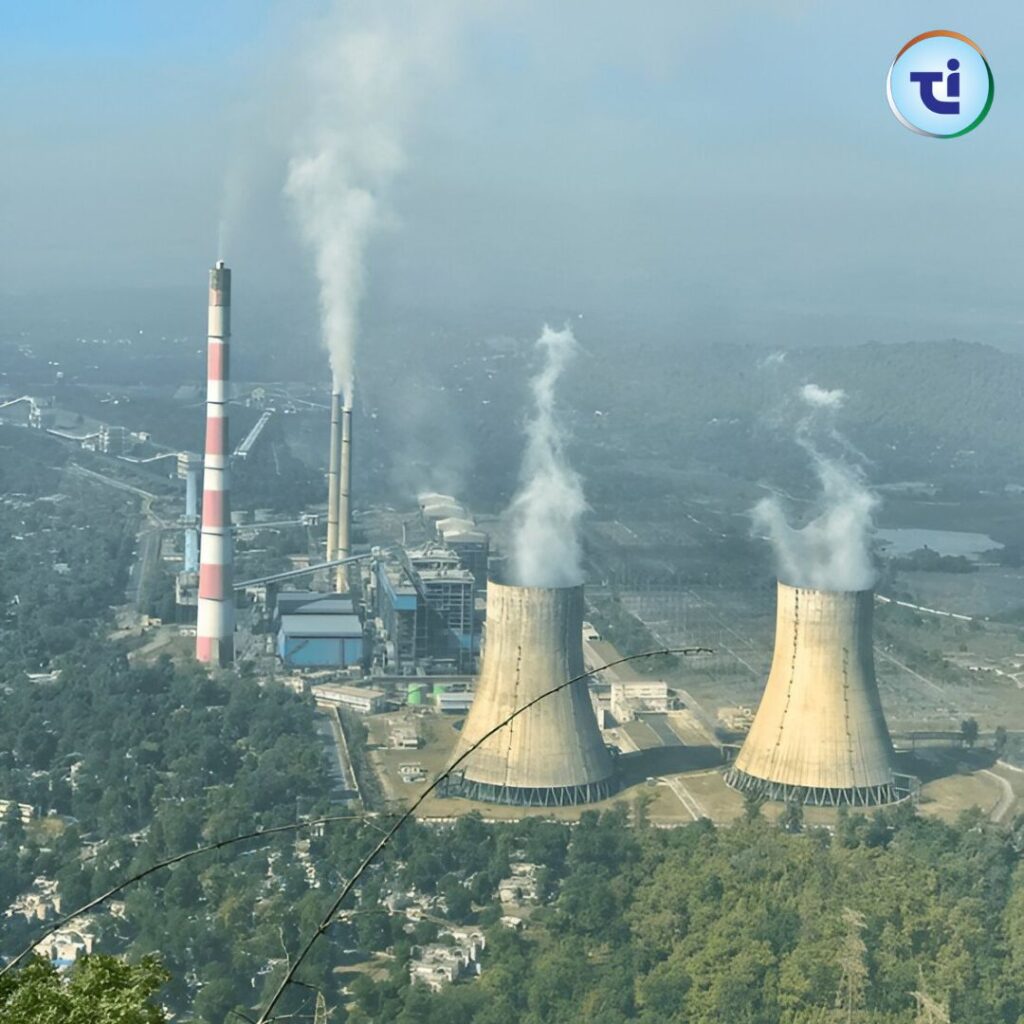Nuclear energy has emerged as a significant pillar of India’s energy strategy, playing a key role in meeting the nation’s growing power demands while ensuring a reduction in carbon emissions. With a population of over 1.4 billion and a rapidly developing economy, India requires a stable, clean, and sustainable energy supply. Nuclear energy in India offers a viable solution to achieve this balance, providing both energy security and environmental benefits.

1. Understanding Nuclear Energy
Nuclear energy is generated through controlled nuclear reactions—either fission (splitting of atoms) or fusion (joining of atoms). In India, nuclear power plants primarily use uranium and thorium as fuel to produce electricity through fission. The energy released in this process generates heat, which produces steam to drive turbines and generate electricity.
Unlike fossil fuels, nuclear energy produces minimal greenhouse gas emissions, making it a clean and sustainable option for large-scale power generation.
2. History of Nuclear Energy in India
India’s journey in nuclear energy began shortly after independence. Under the leadership of Dr. Homi J. Bhabha, the Atomic Energy Commission (AEC) was established in 1948 to spearhead nuclear research and development.
Key milestones in the history of nuclear energy in India include:
- 1954: Creation of the Department of Atomic Energy (DAE).
- 1969: First nuclear power plant, the Tarapur Atomic Power Station (TAPS), became operational.
- 1974: India conducted its first nuclear test, “Smiling Buddha,” demonstrating its capability in nuclear technology.
- 2008: India signed the U.S.-India Civil Nuclear Agreement, enabling access to international nuclear fuel and technology.
3. Current Status of Nuclear Power in India
As of now, India operates 23 nuclear reactors across 7 locations with a total installed capacity of over 7,500 MW. These reactors are managed by the Nuclear Power Corporation of India Limited (NPCIL).
Some key operational nuclear power plants include:
- Tarapur Atomic Power Station (Maharashtra)
- Kakrapar Atomic Power Station (Gujarat)
- Madras Atomic Power Station (Tamil Nadu)
- Kudankulam Nuclear Power Plant (Tamil Nadu)
- Rawatbhata Atomic Power Station (Rajasthan)
In addition, India is developing several new reactors, including the Prototype Fast Breeder Reactor (PFBR) at Kalpakkam, which will play a vital role in the country’s long-term nuclear strategy.
4. India’s Unique Thorium Advantage
One of the most promising aspects of nuclear energy in India is its large thorium reserves—estimated to be around 25% of the world’s total. Thorium, when converted into uranium-233, can be used as nuclear fuel. India’s three-stage nuclear power program is designed to utilize this resource efficiently.
The three stages are:
- Pressurized Heavy Water Reactors (PHWRs) – Use natural uranium as fuel and produce plutonium.
- Fast Breeder Reactors (FBRs) – Use plutonium and uranium to breed more fuel.
- Advanced Heavy Water Reactors (AHWRs) – Use thorium as the primary fuel.
This approach aims to ensure long-term energy security and reduce dependency on imported uranium.
5. Advantages of Nuclear Energy in India
Nuclear energy offers several benefits for India’s energy sector:
- Low Carbon Emissions – Nuclear plants emit almost no greenhouse gases during operation.
- Energy Security – Reduces reliance on fossil fuel imports.
- High Energy Output – A small amount of nuclear fuel can produce a large amount of energy.
- Stable Base Load Power – Unlike solar and wind, nuclear power provides a continuous supply of electricity.
6. Challenges Facing Nuclear Energy in India
While promising, the expansion of nuclear energy in India faces certain challenges:
- Safety Concerns – Incidents like the Fukushima disaster have heightened public concerns.
- High Costs – Construction of nuclear plants requires significant investment.
- Waste Disposal – Safe management of radioactive waste remains a critical issue.
- International Restrictions – Access to nuclear fuel and technology was restricted until the 2008 agreement.
7. Role in Sustainable Development
For India, achieving sustainable development requires balancing economic growth with environmental protection. Nuclear energy in India contributes to this goal by:
- Supporting India’s commitment to the Paris Climate Agreement.
- Reducing air pollution from coal-based power plants.
- Enabling a stable power supply for industries, healthcare, and urban infrastructure.
- Promoting research and technological innovation in advanced nuclear systems.
8. Government Policies and Initiatives
The Indian government has undertaken several initiatives to promote nuclear energy:
- Civil Liability for Nuclear Damage Act (2010) – Defines operator liability in case of nuclear accidents.
- India’s Nuclear Energy Vision 2032 – Aims to achieve 63,000 MW of nuclear capacity by 2032.
- International Collaborations – Partnerships with Russia, France, and the U.S. for reactor construction and technology sharing.
- Make in India in Nuclear Sector – Encouraging domestic manufacturing of reactor components.
9. Future Prospects
India’s future in nuclear energy looks promising. With growing power demands, climate change concerns, and rising fossil fuel costs, nuclear energy will play a vital role in India’s energy mix.
Key future developments include:
- Commissioning of Kudankulam Units 3 & 4.
- Expansion of indigenous PHWR designs for cost-effective power generation.
- Greater focus on thorium-based reactors.
- Integration of nuclear power with renewable sources to create a stable hybrid energy system.
10. Conclusion
Nuclear energy in India stands at the intersection of technology, sustainability, and energy security. While challenges exist, the potential benefits—especially in terms of reducing carbon emissions and ensuring energy independence—make it an essential component of India’s future energy strategy. By harnessing its thorium reserves, investing in safety measures, and fostering international cooperation, India can emerge as a global leader in sustainable nuclear power.
The path forward will require public awareness, robust safety protocols, and consistent government support. With the right policies and technological advancements, nuclear energy can truly power a greener and more secure future for India.




